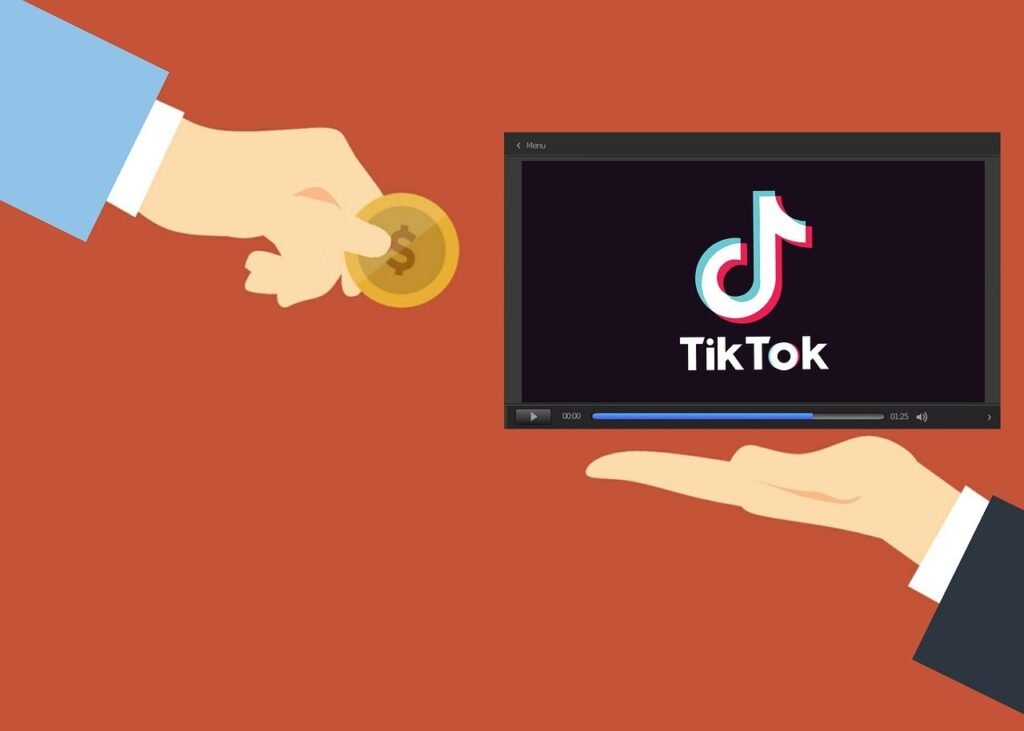In the fast-paced world of digital marketing, managing your online advertising budget effectively can be the difference between success and failure.
As businesses continue to allocate more resources to their online advertising efforts, mastering the art of budget management has become essential.
In this comprehensive guide, we’ll explore the strategies and techniques that will help you manage your online advertising budget like a seasoned professional.
From setting the right budget to choosing the most suitable advertising channels and optimizing your campaigns, we’ve got you covered.
Table of Contents
ToggleWhat is an Online Advertising Budget?
An online advertising budget is the amount of money that a business or organization allocates to fund its digital advertising campaigns.

It serves as a financial framework that outlines how much can be spent on various online advertising efforts, such as pay-per-click (PPC) ads, social media advertising, display advertising, and more.
Here’s a breakdown of the key components:
Amount of Money
This refers to the actual financial resources that a company sets aside for online advertising. It can vary significantly depending on the size and goals of the business.
Scope
An online advertising budget defines the scope of advertising activities. It clarifies which digital marketing channels and platforms will be used to reach the target audience.
Timeframe
It often specifies the timeframe during which the budget will be spent, whether it’s a monthly, quarterly, or annual allocation.
Understanding the concept of an online advertising budget is crucial because it provides businesses with financial discipline. It ensures that marketing efforts are well-planned, controlled, and aligned with the organization’s overall goals.
By having a budget in place, businesses can make informed decisions about how to allocate resources effectively to achieve the desired results from their online advertising campaigns.
In essence, an online advertising budget serves as a roadmap that guides a business’s investment in digital marketing, helping it navigate the complex world of online advertising with clarity and purpose.
The ROI of Effective Budget Management
ROI is a critical metric in digital marketing. It represents the ratio of the revenue generated from your advertising efforts to the amount of money spent on those efforts. A positive ROI indicates that your campaigns are profitable, while a negative ROI means you’re losing money.
Your budget allocation directly affects your ROI. If you overspend or allocate your budget inefficiently, you may not achieve a positive ROI, resulting in wasted resources.
Effective budget management ensures that your advertising budget is used efficiently and effectively. This means spending money in a way that maximizes results and minimizes waste.
By carefully managing your budget, you can optimize your ROI. This may involve adjusting your spending across different advertising channels, targeting specific audience segments more effectively, or fine-tuning your ad creatives.
Effective budget management also helps mitigate risks. It prevents overspending and allows you to identify and address issues early in your campaigns, reducing the chances of budgetary setbacks.
Budget management forces you to make strategic decisions about where and how to allocate your resources. These decisions should align with your overall business goals and marketing objectives.
Setting Your Online Advertising Budget
Assessing Your Financial Resources
To set a realistic budget, you need to evaluate your financial resources. We’ll guide you through the process of determining how much you can allocate to your online advertising campaigns without straining your finances.
To begin, you need to realistically evaluate your company’s financial situation. This means taking an in-depth look at your financial resources, including revenue, profits, and available capital.
The goal is to avoid overcommitting to your advertising budget, which could strain your finances and affect other crucial aspects of your business operations. Overspending can lead to financial difficulties and undermine the sustainability of your marketing efforts.
When assessing your financial resources, you should account for all your business expenses, not just advertising costs. This includes operational expenses, salaries, taxes, and any other financial obligations your business has.
It’s also advisable to set aside a buffer or contingency fund for unexpected expenses or emergencies. This ensures that your business remains financially stable, even if unexpected challenges arise.
While it’s important to set a budget that aligns with your financial capabilities, you should also consider the flexibility to adjust the budget when necessary. Business conditions can change, and having some flexibility in your budget allows you to adapt to evolving circumstances.
Balancing your advertising investment with your overall financial health is a key theme. It’s about finding the sweet spot where you can invest in advertising to promote growth without compromising the stability of your business.
Defining Your Advertising Goals
Clearly defined advertising goals are crucial. Whether your objective is to increase website traffic, generate leads, or boost sales, your goals will shape your budget allocation and strategy.
This section emphasizes the need for clear and specific advertising goals. Your goals should be well-defined, measurable, and achievable. Vague or ambiguous objectives can lead to ineffective budget allocation.
Goal Types
Different businesses may have various advertising goals. These goals can include increasing website traffic, generating leads, boosting sales, enhancing brand awareness, or improving customer engagement.

Your specific goals will depend on your business’s priorities and where you are in your marketing journey.
Goal Alignment
Your advertising budget should align closely with your advertising goals. For example, if your primary goal is to boost sales, you might allocate a significant portion of your budget to channels and strategies that drive conversions.
Resource Allocation
The section emphasizes that your budget allocation should reflect the relative importance of different goals. If you have multiple goals, you’ll need to allocate resources accordingly to achieve a balance that aligns with your business objectives.
Measuring Success
Clear goals also facilitate the measurement of success. By defining specific, measurable targets, you can assess whether your advertising campaigns are meeting their objectives and adjust your budget allocation based on performance.
Flexibility
While it’s essential to set clear goals, it’s also important to remain flexible. Business conditions can change, and your goals may need to evolve. Your budget should allow for adjustments as needed to stay responsive to market shifts.
Calculating Your Maximum Advertising Budget
Explore various methods for calculating your maximum advertising budget, including using a percentage of revenue, industry benchmarks, and cost-per-acquisition (CPA) considerations.
Percentage of Revenue
One common method discussed is allocating a percentage of your revenue to your advertising budget. For example, a business might decide to spend 10% of its annual revenue on advertising.
This approach ties your budget directly to your income, making it flexible and scalable as your revenue grows or contracts.
Industry Benchmarks
Industry benchmarks and standards can provide guidance on what is typical for businesses in your sector. You can research what competitors or similar businesses are spending on advertising and use that as a reference point.
Cost-Per-Acquisition (CPA)
Another method involves determining your budget based on the cost it takes to acquire a new customer or lead.
For instance, if you know that it costs an average of $50 to acquire a new customer, you can set your budget based on how many new customers you aim to acquire.
Seasonal Considerations
Depending on your business, you may need to factor in seasonality. For instance, e-commerce businesses often spend more on advertising during the holiday season when demand is higher. Your budget may need to be flexible to accommodate such fluctuations.
Testing and Optimization
Part of your budget can also be allocated to testing and optimizing your campaigns. This allows you to experiment with different strategies and tactics to find what works best for your business.
Balancing Investments
It’s important to strike a balance between investing enough to achieve your goals and not overextending your resources. Your budget should support your advertising objectives without jeopardizing your overall financial health.
Choosing the Right Online Advertising Channels
Channel Budget Allocation
One of the primary goals of channel budget allocation is to balance your budget across various advertising channels. Different channels may have varying costs, audiences, and conversion rates, so it’s important to distribute your budget in a way that aligns with your goals.

Consider the historical performance of each advertising channel. Some channels may have consistently delivered better results in terms of conversions, click-through rates, or ROI. Allocating a larger portion of your budget to high-performing channels can be a strategic move.
Your target audience may be more active on certain channels. Allocate your budget to channels that align with your audience’s preferences and behavior. For example, if you’re targeting a younger audience, social media channels like Instagram or TikTok might be more effective.
Leave room in your budget for experimentation. Allocate a portion to test new channels or strategies. This allows you to explore opportunities for growth and adapt to changing market trends.
If you have a successful campaign or channel that consistently generates positive ROI, consider scaling it up by allocating more budget to capitalize on its effectiveness.
Regularly monitor the performance of your advertising channels. If you find that a particular channel is underperforming or exceeding expectations, be prepared to adjust your budget allocation accordingly.
Budget Tracking and Optimization
Budget tracking and optimization are essential aspects of effectively managing your online advertising campaigns.
Real-time Monitoring
To effectively manage your budget, you need to monitor your campaign spending in real-time. Many advertising platforms provide tools and dashboards to track spending, clicks, conversions, and other key metrics as your campaign progresses.
Setting Daily or Monthly Limits
Consider setting daily or monthly budget limits for your campaigns. This helps prevent overspending and ensures that you stay within your allocated budget.
Performance Metrics
Continuously monitor the performance of your campaigns using key metrics such as click-through rate (CTR), conversion rate, return on ad spend (ROAS), and cost-per-acquisition (CPA). These metrics provide insights into how effectively your budget is being utilized.
Adjusting Bids
Some advertising platforms allow you to adjust your bids in real-time. You can increase or decrease your bid amounts based on performance data to ensure that you’re getting the best value for your budget.
A/B Testing
Experiment with different ad creatives, headlines, and targeting options to identify what works best. Allocate a portion of your budget to A/B testing to optimize your campaigns and achieve better results.
Pausing or Scaling
If you notice that a particular campaign or ad set is not performing well, consider pausing it to reallocate the budget to more successful campaigns. Conversely, if a campaign is delivering exceptional results, consider scaling it up by increasing its budget.
Regular Budget Reviews
Schedule regular budget reviews to assess campaign performance, adjust budgets, and make strategic decisions based on data and ROI. This ensures that your budget is being used efficiently and effectively.
Conclusion
Managing your online advertising budget like a pro is an ongoing journey that requires careful planning, monitoring, and adaptation.
By mastering the fundamentals, setting clear goals, making informed channel choices, and continually optimizing your campaigns, you’ll be well on your way to achieving outstanding results and making the most of your advertising budget.
In today’s digital marketing landscape, staying ahead and managing your online advertising budget effectively are crucial for long-term success.
Whether you’re a small business owner or a seasoned marketer, the strategies outlined in this guide will empower you to navigate the complex world of online advertising and drive meaningful results for your business.
By implementing the techniques discussed here, you’ll have the knowledge and skills to manage your online advertising budget like a pro. Remember, success in online advertising isn’t just about spending money—it’s about spending it wisely.








